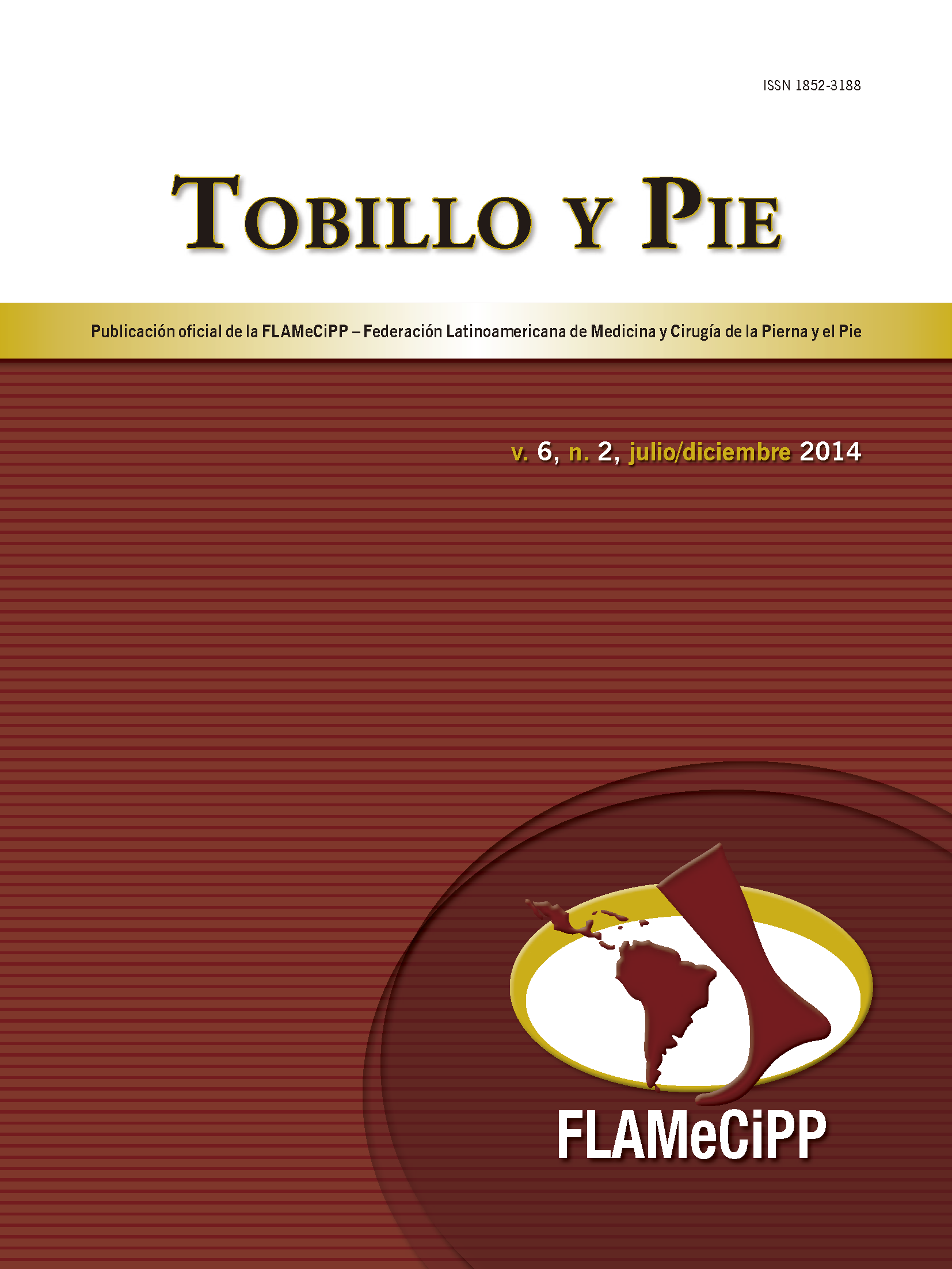Estudo comparativo entre três técnicas cirúrgicas para o tratamento do Hálux Valgo leve e moderado
Keywords:
Hallux valgus/treatment, Osteotomy/ radiography, Orthopedic procedures/surgeryAbstract
Objective: This study sought to compare the results obtained by surgical correction of mild and moderate hallux valgus using the following three surgical techniques: “Chevron”, Bosch and percutaneous (Reverdin-Isham). These techniques were compared by analyzing clinical, functional and radiographic results. Methods: This retrospective study included 79 patients with a mean age of 53.2 years. Of these, 72 patients were women. We evaluated patients’ clinical and functional performance according to the American Orthopaedic Foot and Ankle Society (AOFAS) score; radiography analysis included the hallux valgus angle (HVA), intermetatarsal angle (IMA) and the distal metatarsal articular angle (DMAA). Results: The mean preoperative AOFAS was 39.4, which increased to 90.2 in the general sample. The analysis of each technique showed that AOFAS increased by 56 points in patients who underwent “Chevron” technique, 49.5 in those who underwent the Bosch technique tand 59 in those who underwent the percutaneous technique. All measured angles decreased significantly The pre and postoperative rang for the HVA was greatest in the general sample (from 25.9º to 12.9º). The HVA ranged from 24.4º to 14.6º (9.8º) in the “Chevron”, group from 25.4º to 13.5º (11.9º) in the Bosch group and from 27.5º to 11.1º (16.4º) in percutaneous group. We also observed a decrease in IMA in the general sample (from 14.3º to 10.3º). The IMA ranged from 13.8º to 9.6º in the “Chevron” group, from 15.3º to 10.6º in the Bosch group and from 14.1º to 10.9º in the percutaneous group. The DMAA also showed a significant decreased with the three applied techniques (from 15.6º to 8.6º). The DMAA ranged from 14.9º to 8.1º (6.8º) in the “Chevron” group, from 13.4º to 5.6º (7.8º) in the Bosch group and 17.6 to 10.8º (6.8º) in percutaneous group. Conclusion: Results were similar indicating the efficacy of the three surgical techniques; postoperative AOFAS score increased and HVA, IMA and DMAA decreased. The HVA reduced significantly better in patients who underwent the percutaneous procedure than in those who underwent the other techniques.


